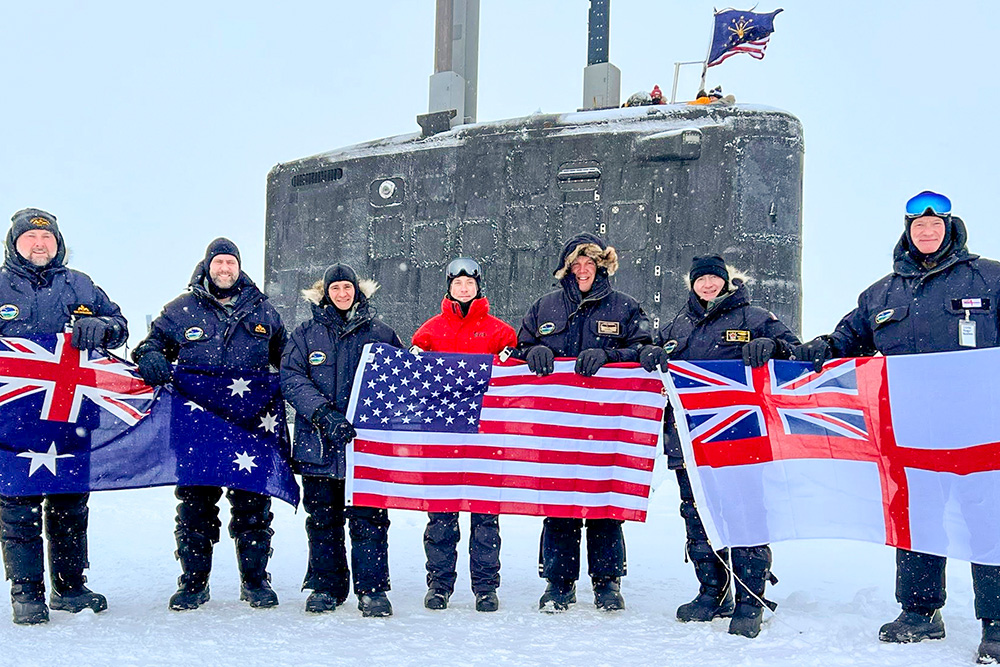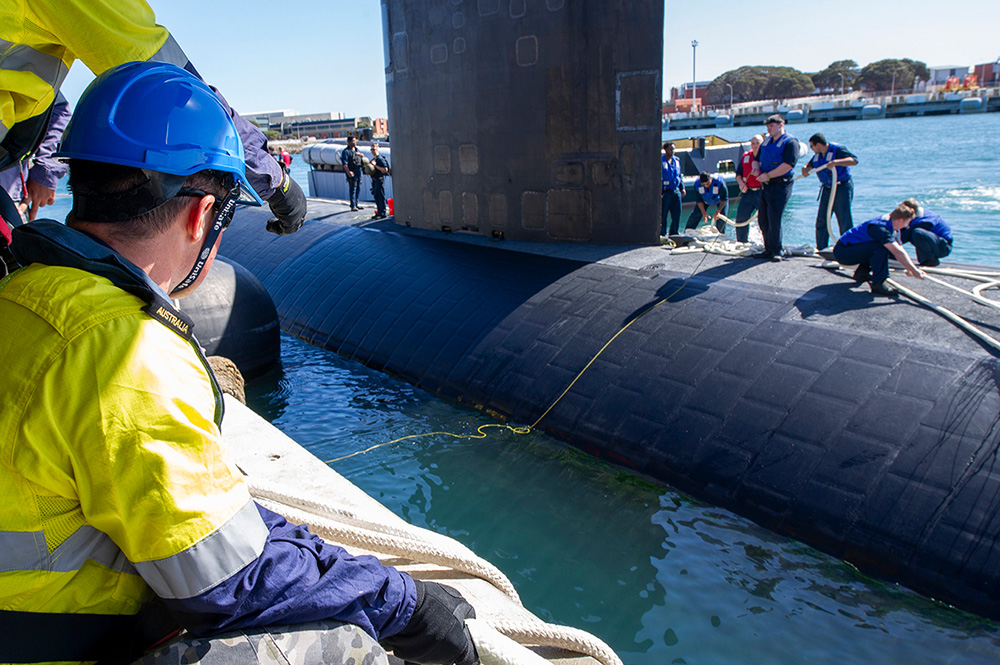The security partnership among Australia, the United Kingdom and the United States, known as AUKUS, is aimed at promoting a free and open Indo-Pacific and represents a tangible example of the Defense Department’s longstanding commitment to deepening alliances, a senior Pentagon official said on Friday.
Madeline Mortelmans, acting assistant secretary of defense for strategies, plans and capabilities, underscored the core role allies and partnerships serve in carrying out the 2022 National Defense Strategy and the lasting impact AUKUS will have on DOD’s approach to strategic competition.
“When I talk about the NDS, the 2022 NDS, and what’s different about it, I always highlight and observe that almost every U.S. strategy, for years, has emphasized the importance of our allies and partners,” Mortelmans said during a panel discussion hosted by the Center for a New American Security, a public policy think tank in Washington, specializing in national security issues.
“What’s different about this NDS is a call to action to do things differently, to drive change in breaking down barriers to how we work with allies and partners to bring them in sooner to our planning processes, to actually think at every stage of planning, operations [and] activities about how we can do this better with allies and partners,” she said. “In that context, AUKUS is exactly in-line with our National Defense Strategy.”

Navy personnel from the U.S., U.K. and Australia display flags outside of the USS Indiana while the submarine is surfaced in the Beaufort Sea, Arctic Circle during Operation Ice Camp, March 13, 2024. © Navy Lt. Sarah Niles
The partnership, which was agreed to in September 2021, is aimed at fostering technology exchanges among the three countries and building Australia’s nuclear-powered submarine force.
Under “Pillar 1” of the plan, Australia will purchase three Virginia-class, conventionally armed, nuclear-powered submarines in time to replace its current fleet of diesel electric subs in the 2030s.
The three countries will also develop a state-of-the-art platform designed to combine and leverage their shared submarine technology. The “SSN-AUKUS” as the future platform is known, is slated to be fielded by the U.K. in the 2030s and by Australia in the 2040s.
The second pillar of the agreement is focused on developing joint capabilities to further enhance interoperability among the participating nations with a focus on cyber capabilities, artificial intelligence, quantum technologies and additional undersea capabilities.
Mortelmans said that the three countries have made long strides since the agreement was first announced.

Navy personnel from the U.S., U.K. and Australia display flags outside of the USS Indiana while the submarine is surfaced in the Beaufort Sea, Arctic Circle during Operation Ice Camp, March 13, 2024. © Navy Lt. Sarah Niles
She noted that over the last year, the U.S. has increased submarine visits to Australia, and hosted Australian naval personnel at U.S. training schools. Australia has also begun to set the foundation with industry for the future production and maintenance of nuclear-powered submarines.
Under Pillar 2, she said, the partner nations are well underway in developing, experimenting and fielding new technology together.
In the coming years the partnership will continue pay dividends, Mortelmans said.
“I want to emphasize that AUKUS is not static,” she said. “It will continue to grow. The ideal vision is that AUKUS becomes part of how we, at the Department of Defense, operate together — breaking down those barriers, realizing the vision of our 2022 NDS that said that we’re going to figure out how we plan, how we develop, how we field, how we operate together earlier and more effectively.”
“AUKUS is critical to realizing that vision,” she said.





